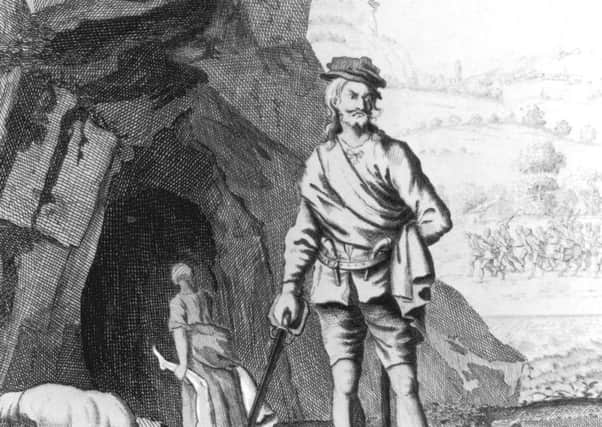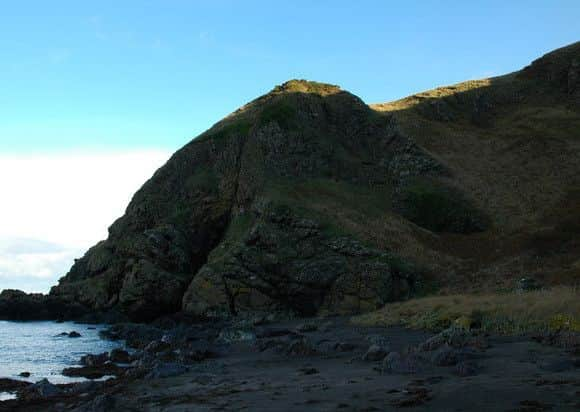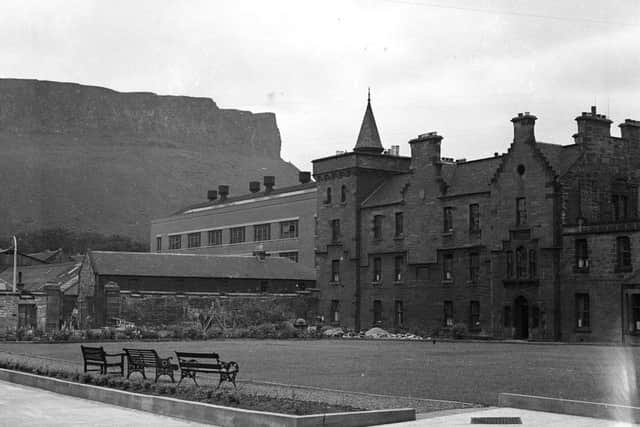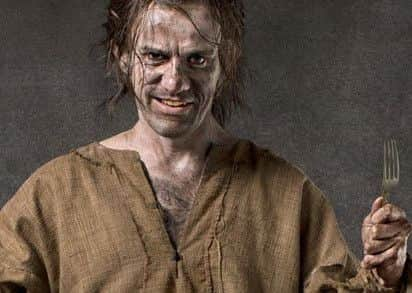Was Scotland once home to cannibals?


While clan head Sawney Bean remains the country’s most famous cannibal, records of Scottish anthropophagy go back more than 1,000 years.
In historian Robert Chambers Book of Days (1862-4), the author cites a passage from St Jerome, who while visiting the ancient European region of Gaul in around 380, ‘learned that the attacotti, the people of the country now called Scotland, while hunting in the woods, preferred the shepherd to his flocks, and chose only the most fleshy and delicate parts for eating’.
Sawney Bean


Advertisement
Hide AdAdvertisement
Hide AdAccording to legend, Sawney Bean was born Alexander Bean in East Lothian during the time of James VI but left there to set up home in an isolated cavern on the south west coast of Scotland.
The cave is said to have been 200 feet deep and its entrance became totally submerged at high tide.
It was in this seclusion, over 25 years, that he fathered his large, incestuous and blood-thirsty family.
Competing versions of the story reference Bennane Head, Ayrshire and the Mull of Galloway but both agree that the family would capture wayward travellers and kill them for food.


What remained of their unfortunate victims, after the brood had feasted upon them, was returned to their cave to be pickled and consumed later.
There were some reports of missing persons and findings of stripped human bones but none were taken too seriously.
Sawney and his family’s undoing is said to have come when one of their victims escaped their clutches and alerted the authorities.
Upon hearing the news, King James led a force of 400 soldiers and a pack of ferocious hounds to eradicate Sawney Bean and his family.


Advertisement
Hide AdAdvertisement
Hide AdFollowing their arrest the Bean family was then executed in Glasgow or Leith without trial.
The menfolk were brutally dismembered and allowed to bleed until they died; in full view of the women and children whom were themselves burned to death afterwards.
There is some speculation as to the truth and accuracy of the tale.
Some academics interpret it as anti-Scottish propaganda designed to show the Scots as dangerous savages at a time of political unrest and resentment.


Others consider it to be a warning to children against being work-shy or disobedient, in the same vein as the Boogeyman in the United States.
Regardless, the story of Sawney Bean has provided fodder for many films, songs and other forms of entertainment including the 2010 film “Hotel Caledonia” which was written, produced and directed by Nicholas David and the 2012 horror novel “In The Devil’s Name”.
The cannibal butcher of Perth
And it didn’t end there, in the Orgygnale Chronykil of Scotland by Andrew of Ayntoun, a case of cannibalism from 1339 is brought to light when the English Armies of Edward III found: “A Carle they said was near therby, That wold set settis (traps) commonly, Children and women for to slay, And swains that he might over-ta; And ate them all that he get might: Chrysten Cleek till name be bight.”


Chrysten Cleek was the nickname of Andrew Christie, a butcher from Perth who would pull his victims from their horses before devouring them.
Queensberry House cannibal
Advertisement
Hide AdAdvertisement
Hide AdQueensberry House in Edinburgh’s Canongate is now incorporated into the Scottish Parliament complex, but was initially built in the 1680s as a home for William Douglas, the first Duke of Queensberry.
It is said that one member of the Duke’s son, James, was known to be mentally disturbed and spent the majority of his life indoors for both his own safety and that of others.
However, on one particular night, he was locked in his room while the rest of his family went out celebrating the signing of the Act of Union. The only other person in the building was a kitchen hand who was tending to a kitchen fire.
After dozing off, the worker was disturbed by the sound of footsteps and when he finally awoke, he was met by the sight of the madman standing in the doorway of the kitchen having broken out of his room.
James then killed the boy and begun devouring him when the servants returned.
When the Duke’s family returned to the property the next day, the kitchen fire had burned out and was replaced with the smell of burning flesh filling the air. The charred remains or the boy were tied up in the spit indicating that he had been roasted alive and eaten.
For many years afterwards, the screams of the kitchen hand echoed through the house.
Since the gruesome murder, Queensberry House has been used as an Army barracks, a house of refuge, a public hospital and a geriatric hospital.
The story of James Douglas featured in a novel by Edinburgh author Ian Rankin.